|
SE.5a Wolseley Viper
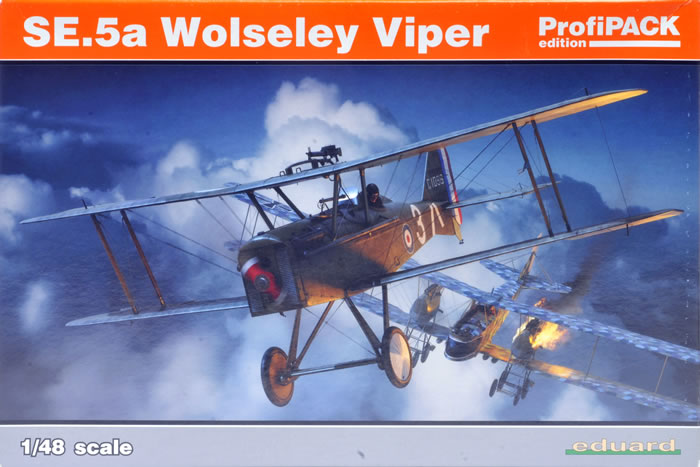
Eduard ProfiPACK, 1/48 scale
S
u m m a r y |
| Catalogue Number: |
Eduard Kit No. 82131 - SE.5a Wolseley Viper |
| Scale: |
1/48 |
| Contents and Media: |
111 parts in grey coloured plastic (including 18 marked not for use); 11 parts in clear; colour (and brass) photo-etched fret; self-adhesive masking sheet; markings for six aircraft |
| Price: |
USD$33.96 plus shipping,
available online now from Eduard
GBP£24.70 (£20.58 Export Price) plus shipping available from Hannants |
| Review Type: |
FirstLook |
| Advantages: |
High level of detail; outstanding surface features including fabric texture, stringers, rib tapes and raised rivets where appropriate; includes colour photo-etched parts; separate control surfaces; many options, some applicable to later releases, high quality decals. |
| Disadvantages: |
|
| Conclusion: |
Eduard's 1/48 scale SE.5a is highly detailed, features exquisite surface textures and should be a pleasure to build judging by my experiences with recent Eduard kits. At $33.96, it represents outstanding value too.
Highly Recommended. |
Reviewed by Brett Green

Eduard's 1/48 scale SE.5a ProfiPACK will be available online from Squadron.com
The Royal Aircraft Factory S.E.5 was a British biplane fighter aircraft of the First World War.
It was developed by the Royal Aircraft Factory by a team consisting of Henry Folland, John Kenworthy and Major Frank Goodden. It was one of the fastest aircraft of the war, while being both stable and relatively manoeuvrable. According to aviation author Robert Jackson, the S.E.5 was: "the nimble fighter that has since been described as the 'Spitfire of World War One'".
The S.E.5 was capable of superior overall performance than the rival Sopwith Camel, both aircraft being capable dogfighters of the era; however, problems with its Hispano-Suiza engine meant that there was a chronic shortage of S.E.5s until well into 1918. Thus, while the first examples had reached the Western Front before Camel, there were fewer squadrons were equipped with the S.E.5 than those that had been provided with the Sopwith fighter instead.

The troublesome geared "-8b" model was prone to have serious gear reduction system problems, sometimes with the propeller (and even the entire gearbox on a very few occasions) separating from the engine and airframe in flight, a problem shared with the similarly-powered Sopwith Dolphin. The introduction of the 200 hp (149 kW) Wolseley Viper, a high-compression, direct-drive version of the Hispano-Suiza 8a made under licence by Wolseley Motors Limited, solved the S.E.5a's engine problems and was promptly adopted as the type's standard powerplant
Together with the Camel, the S.E.5 was instrumental in regaining allied air superiority in mid-1917 and maintaining it for the rest of the war, ensuring there was no repetition of "Bloody April" 1917 when losses in the Royal Flying Corps were much heavier than in the Luftstreitkräfte. The S.E.5s remained in RAF service for some time following the Armistice that ended the conflict, but began to be withdrawn soon afterwards. Quantities of ex-RAF aircraft were transferred to various overseas military operators, a number were also adopted by civilian operators.*
*Historical summary adapted from Wikipedia
Eduard is one of, if not the most prolific model companies in the world today, but the release of a brand new tool kit is still an exciting event.
Eduard returns to WWI during the 100th Anniversary of that world-shaping conflict with their Wolseley Viper powered version of the SE.5a.
Eduard's 1/48 scale SE.5a comprises 111 parts in grey plastic (18 of these are marked "not for use" in this boxing), 11 parts in clear, a single photo-etched fret with pre-painted colour and bare brass parts, self-adhesive painting masks and markings for six aircraft.
Detail is excellent. The cockpit is built up inside a plastic frame and sits on the centre section of the wing.
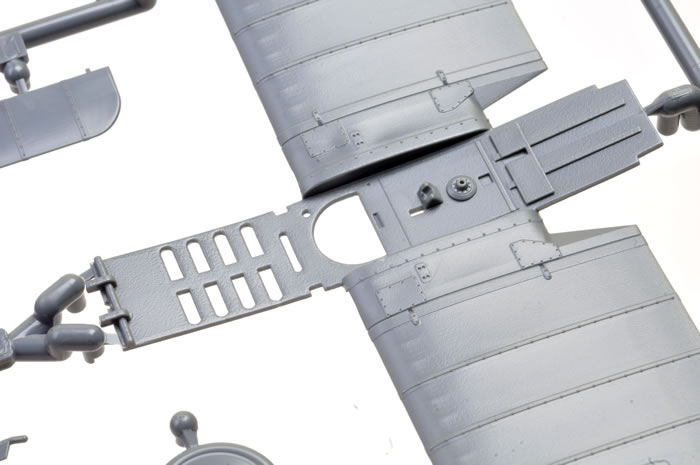
Colour photo-etched harness straps and instrument panel are included. The instrument panel features separate dials with precisely printed markings and needles.
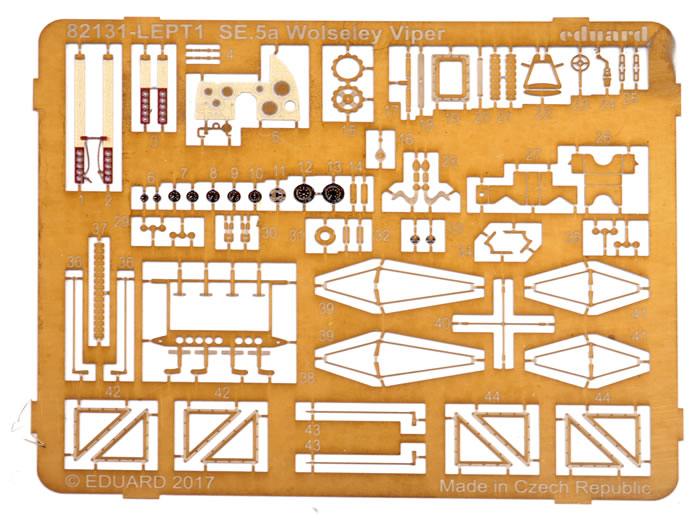
A nicely detailed Wolseley Viper engine is included too, although you won't see much of it when the model is complete.
The fabric treatment on this model is superb - perhaps Eduard's best yet. I'm not just talking about the rib tapes, stringers and convincing stretched effect, although these are beautifully done, but when viewed very close up the wings and tail planes feature a super subtle fabric texture.
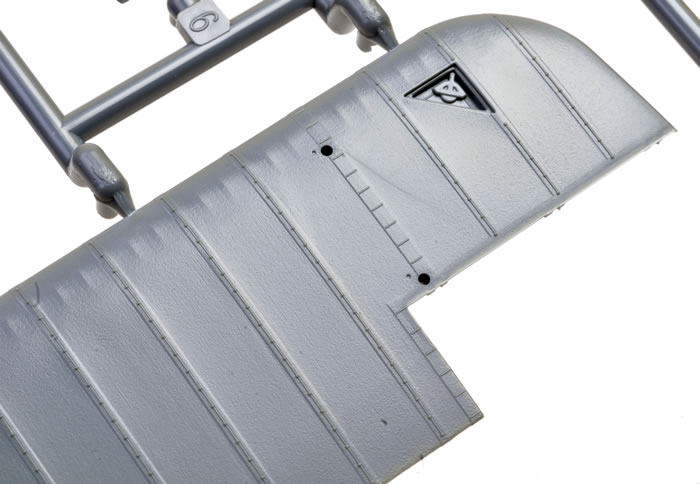
I really like the stitching detail and raised rivets and hinges on the fuselage too.
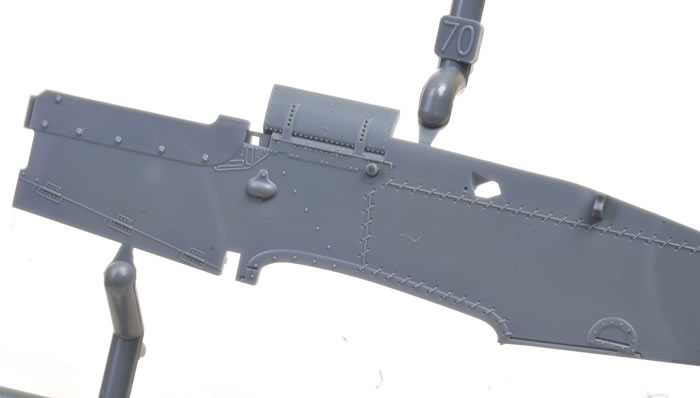
Another detail of note is the clear inspection panels on the upper surfaces of the lower wings and tail planes.
Options include alternative main undercarriage legs, optional wing-mounted Vickers gun and headrest fairing, two styles of windscreen and centreline bomb racks.
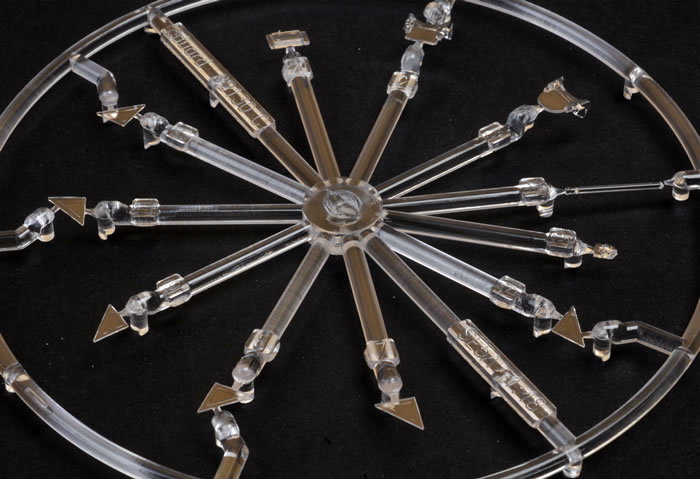
Other options that do not apply to this version are also on the sprues. These include an alternative two-bladed preopller, a four-bladed propeller, a Hispano-Suiza engine and the early-style radiator. I'm not sure if there are enough parts on the sprues to actually build a Hispano-Suiza-powered SE.5a, but you won't have long to wait anyway, as Eduard has announced a May release of the Royal Class boxing of this version.
Parts breakdown is conventional for a WWI aircraft. The lower and upepr wings are both full-span, and all control surfaces are separate. These is a single pair of interplane and cabane struts on each side, so this should not be too much of a chore. Deep locating holes and pins are present too.
Markings
Markings are supplied for six varied SE.5as in British and American markings.
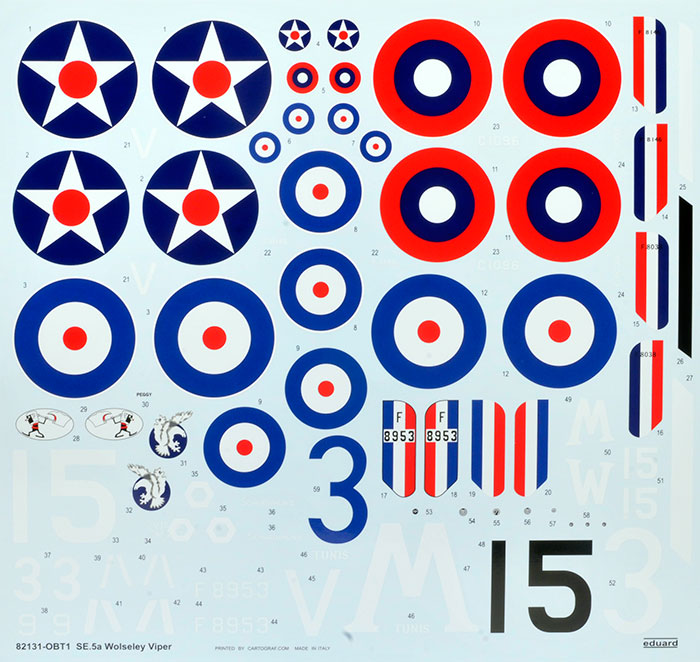
The large colourful decal sheet is perfectly printed by Cartograf.
Printing, colours and registration is perfect on my sample.
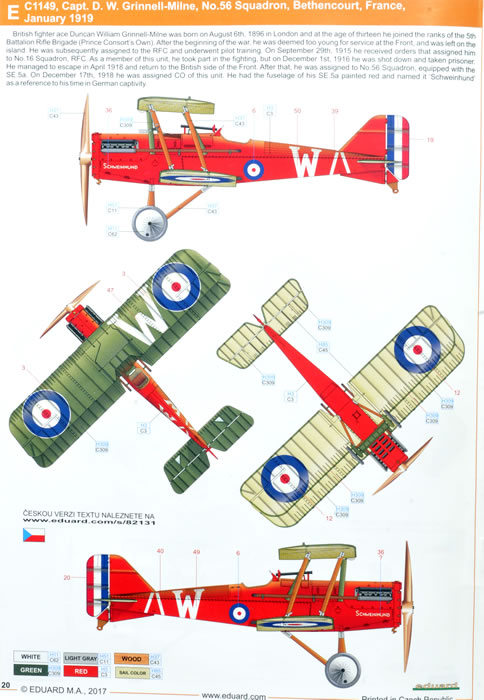
Full colour four view diagramsand historical notes are included for all of the schemes.
Eduard's 1/48 scale SE.5a is highly detailed, features exquisite surface textures and should be a pleasure to build judging by my experiences with recent Eduard kits. At $33.96, it represents outstanding value too.
Highly Recommended.
Purchased by reviewer.
Review Text Copyright © 2017 by
Brett Green
Page Created 21 March, 2017
Last updated
21 March, 2017
Back to HyperScale Main Page
Back to Reviews Page |
